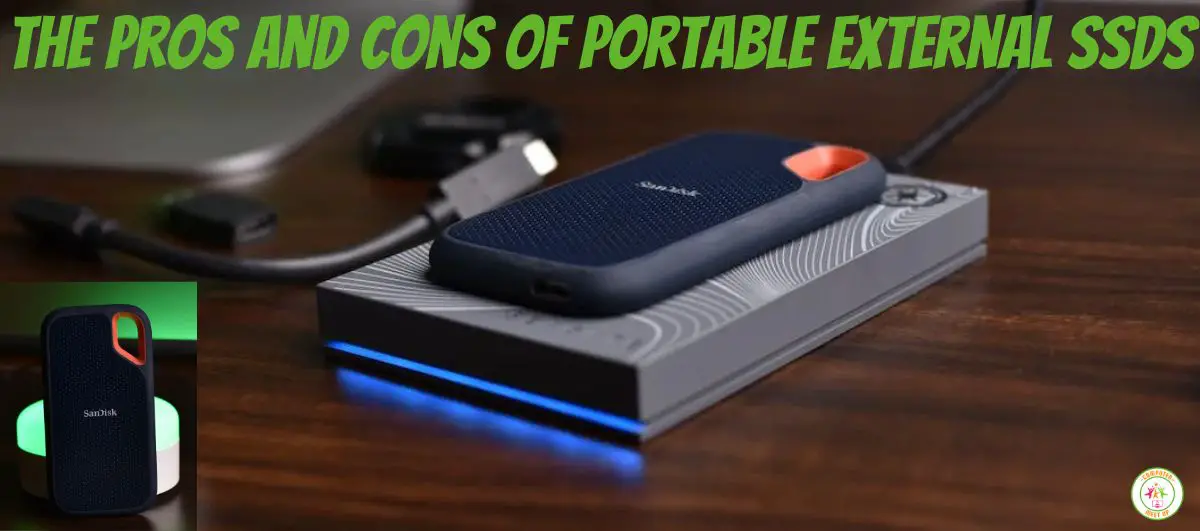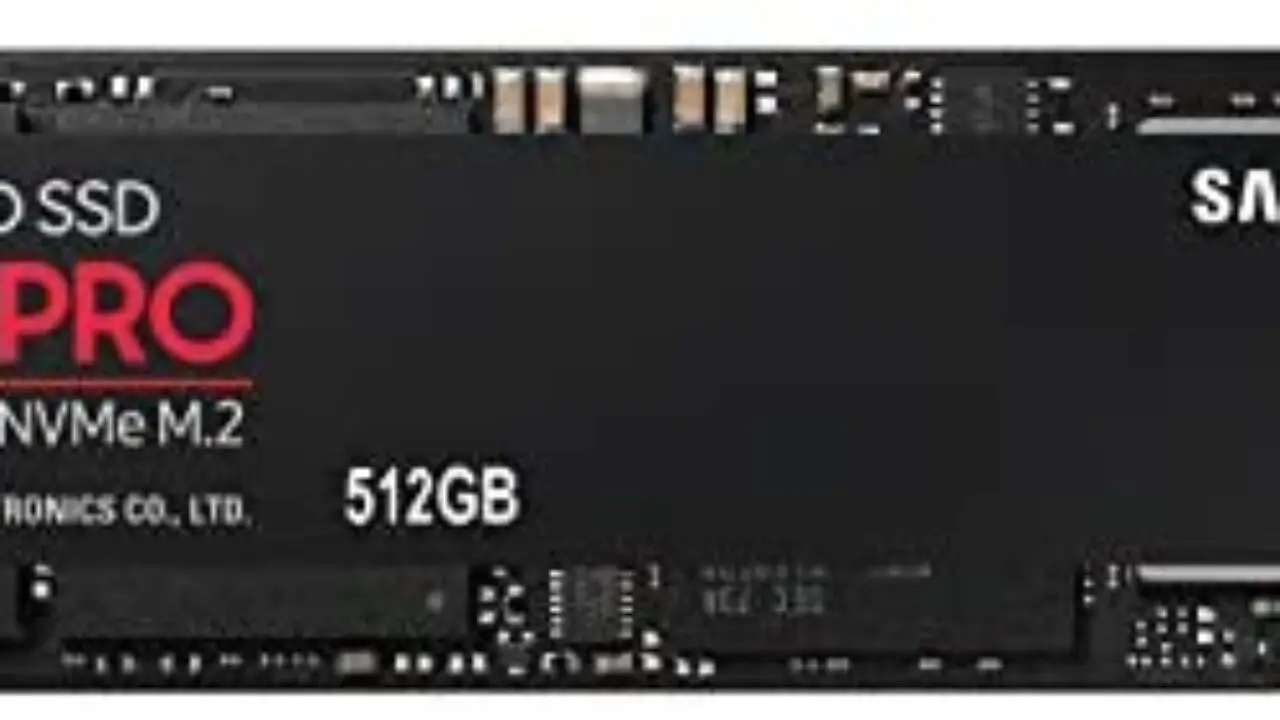In today’s digital age, portable storage has become a necessity for many individuals and businesses alike. With the ever-increasing amount of data we accumulate, it’s crucial to have reliable and efficient storage solutions. Two popular options that have gained significant attention are external SSDs (Solid State Drives) and flash drives (also known as USB drives or thumb drives). Both offer convenient ways to store and transfer data, but they differ in various aspects, including speed, capacity, durability, and price. In this article, we’ll compare external SSDs and flash drives, highlighting their strengths and weaknesses to help you determine which one is the better choice for your portable storage needs.
Performance Comparison:
When it comes to performance, external SSDs have a significant edge over flash drives. SSDs utilize flash memory technology, similar to that found in flash drives, but with more advanced controllers and faster interfaces. This translates into faster data transfer speeds and quicker access times, making external SSDs ideal for tasks that require high performance, such as running operating systems or working with large files.
External SSDs also have better random read and write speeds, which significantly affect the overall performance of the device. Flash drives, on the other hand, may struggle with handling multiple read/write operations simultaneously, resulting in slower performance when multitasking or dealing with large data sets.
Storage Capacity:
One crucial factor to consider when choosing between external SSDs and flash drives is storage capacity. Flash drives typically offer lower storage capacities compared to external SSDs. While flash drives can range from a few gigabytes (GB) to a few terabytes (TB), their maximum capacity is often limited. On the other hand, external SSDs can provide much higher capacities, reaching several terabytes or even petabytes (PB) in some cases. If you require ample storage space for your files, especially for multimedia or large software installations, an external SSD would be the more suitable option.
Durability and Reliability:
When it comes to durability and reliability, external SSDs have the upper hand. Unlike flash drives, which rely on delicate components and exposed connectors, SSDs feature a more robust construction. External SSDs are designed to withstand shock, vibrations, and accidental drops, making them more resistant to physical damage. Additionally, they have no moving parts, reducing the risk of mechanical failure. Flash drives, although generally sturdy, can be more susceptible to damage due to their compact size and exposed connectors.
Portability and Convenience:
Both external SSDs and flash drives are designed with portability in mind, but flash drives are typically more compact and lightweight. Flash drives easily fit into pockets, making them convenient for carrying around. On the other hand, external SSDs are slightly larger but still portable enough to be carried in a bag or backpack. If you prioritize utmost portability and minimal weight, a flash drive might be the better option.
Price Considerations:
When comparing the prices of external SSDs and flash drives, it’s essential to consider the storage capacity and performance. Generally, flash drives are more affordable, especially for lower capacities. However, as the capacity increases, the price per gigabyte tends to be higher for flash drives. External SSDs, although initially more expensive, offer better value for higher capacities and improved performance. If you require faster speeds and larger storage capacities, investing in an external SSD might be a more cost-effective solution in the long run.
Compatibility:
Both external SSDs and flash drives are compatible with various devices, including computers, laptops, gaming consoles, and smart TVs. They typically support common operating systems such as Windows, macOS, and Linux. However, it’s worth noting that some external SSDs may require specific drivers or firmware updates for optimal compatibility. Flash drives, on the other hand, usually work seamlessly without any additional software installations or updates.
Data Transfer Speed:
External SSDs outperform flash drives in terms of data transfer speed. SSDs utilize advanced interfaces like USB 3.1 Gen 2 or Thunderbolt, enabling significantly faster read and write speeds. This makes them ideal for transferring large files, such as high-resolution videos or complex software installations. Flash drives, although slower, still offer reasonable transfer speeds for everyday tasks like document storage or file backup.
Security Features:
When it comes to securing your data, external SSDs often provide more advanced security features compared to flash drives. Many external SSDs offer hardware encryption, password protection, and built-in security software to safeguard your files. This makes them a preferred choice for professionals or individuals dealing with sensitive data. While some flash drives offer basic encryption options, they generally lack the comprehensive security features provided by external SSDs.
Lifespan and Warranty:
External SSDs generally have a longer lifespan compared to flash drives. SSDs have no moving parts, reducing the risk of mechanical failure, and are more resistant to physical damage. They also tend to have higher endurance, meaning they can handle a greater number of read and write cycles over their lifetime. It’s worth noting that the lifespan of any storage device can be affected by various factors, such as usage patterns and environmental conditions. Both external SSDs and flash drives typically come with manufacturer warranties, but the duration and coverage may vary.
FAQs
Q1: Can I use an external SSD or flash drive as a bootable device for my operating system? A1: Yes, both external SSDs and flash drives can be used as bootable devices for your operating system. However, it’s important to ensure that your device’s firmware supports booting from external storage.
Q2: Can I connect an external SSD or flash drive to my smartphone or tablet? A2: Yes, many smartphones and tablets support USB On-The-Go (OTG) functionality, allowing you to connect external storage devices like SSDs or flash drives. However, compatibility may vary depending on the device and operating system.
Q3: Are external SSDs and flash drives resistant to magnetic fields? A3: Both external SSDs and flash drives are generally resistant to magnetic fields. However, extreme exposure to strong magnetic fields may cause data corruption or loss, so it’s best to avoid exposing them to such conditions.
Q4: Can I use an external SSD or flash drive with a gaming console? A4: Yes, most modern gaming consoles support external storage devices, including SSDs and flash drives, to expand storage capacity or store game installations.
Q5: Are external SSDs faster than internal hard drives? A5: Yes, external SSDs generally offer faster data transfer speeds compared to traditional internal hard drives. However, the specific performance may vary depending on the SSD model and the interface used.
Q6: Can I safely remove an external SSD or flash drive without ejecting it? A6: It is always recommended to properly eject or safely remove external storage devices to avoid data corruption or loss. While modern operating systems have mechanisms to minimize the risk, it’s best to follow the recommended procedure.
Q7: Are there any size limitations when using external SSDs or flash drives with specific operating systems? A7: Most operating systems support external storage devices up to several terabytes in size. However, older systems or file systems may have limitations, so it’s essential to check the compatibility and requirements of your operating system.
Q8: Can I use both an external SSD and a flash drive simultaneously on the same device? A8: Yes, you can use multiple external storage devices simultaneously on the same device, including both SSDs and flash drives. Ensure that your device has enough USB ports or supports daisy-chaining to connect multiple devices.
Q9: Are there any power requirements for using external SSDs or flash drives? A9: Both external SSDs and flash drives are typically bus-powered, meaning they draw power from the device they are connected to. Ensure that your device provides sufficient power to drive the storage device properly.
Q10: Can I use an external SSD or flash drive to extend the storage of my cloud-based services? A10: In some cases, cloud-based services may allow you to sync or back up data directly to external storage devices. However, it’s important to check the compatibility and specific requirements of your cloud service provider.
Conclusion:
Choosing between an external SSD and a flash drive for your portable storage needs ultimately depends on your specific requirements and priorities. If you prioritize performance, larger storage capacities, durability, and advanced security features, an external SSD would be the better choice. On the other hand, if you prioritize utmost portability, lower cost, and basic data transfer needs, a flash drive may suffice. Consider the factors discussed in this article, evaluate your needs, and make an informed decision that aligns with your storage requirements. Remember, the right choice will ensure that your data remains safe, accessible, and conveniently portable wherever you go.


